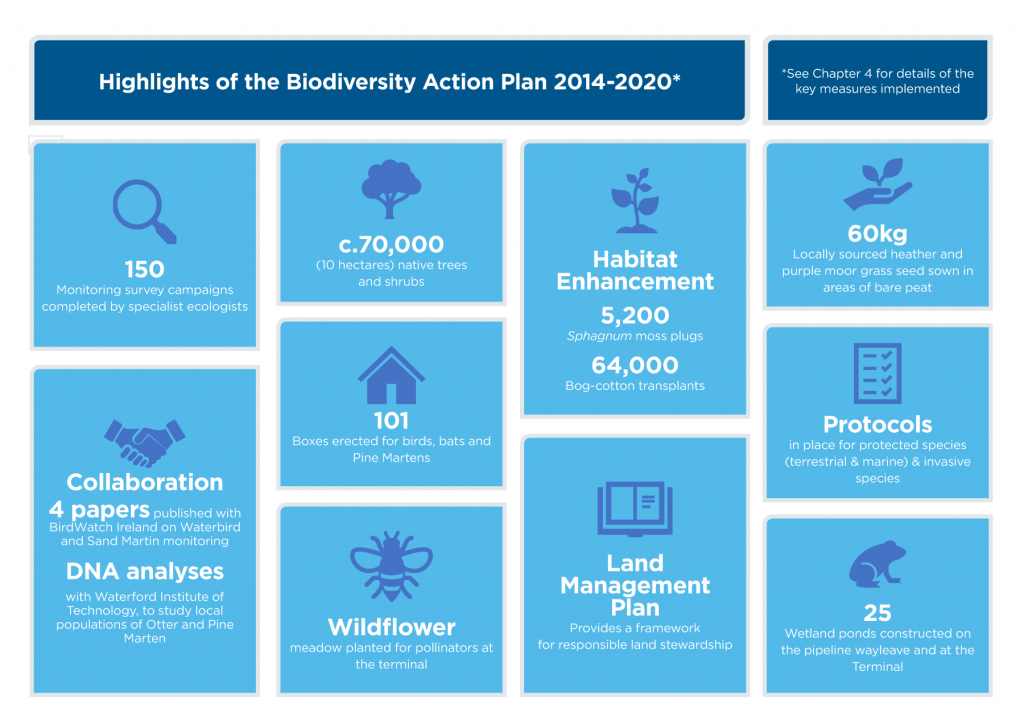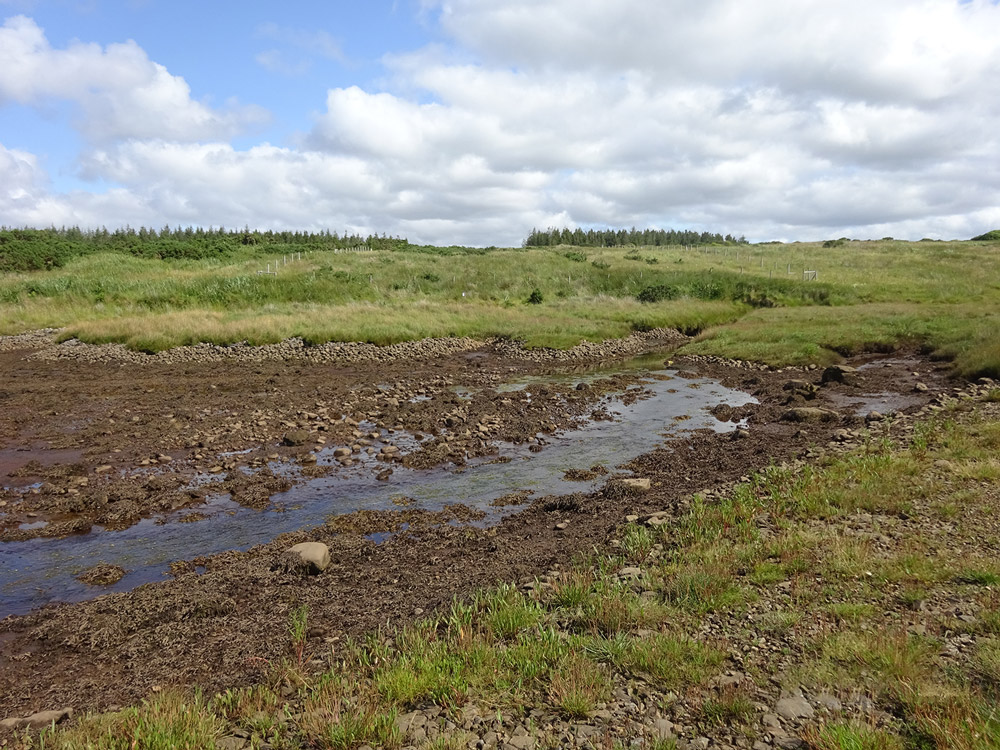Vermilion’s environmental stewardship covers all our geographical areas of operations from the wells 83km offshore to the Bellanaboy Bridge Gas Terminal. We understand that protecting biodiversity is of critical importance. We are proud to publish the second Corrib Biodiversity Action Plan.
Environmental protection is integrated into the day to day operations at the BBGT, The Biodiversity Action Plans have been developed in accordance with the national strategy on biodiversity and that of the oil and gas industry. They set out clear Actions and Objectives. The aim is to conserve, protect maintain and enhance biodiversity and ecosystem services within the zones of influence of Corrib and our operations. The monitoring of biodiversity has been taking place since 2001 and an extensive database has been established and shared with researchers and the National Biodiversity Centre.

The life of the 2014-2019 BAP marked the crucial transition from construction to operations and from the biodiversity perspective included the vital habitat reinstatement phase of construction for the Terminal site and the Pipeline. At the outset of the Corrib Development a commitment was made to reinstate habitats disturbed by construction and, where appropriate / feasible, to put in place biodiversity enhancement measures. As reported in the first BAP, in 2011 Corrib was chosen, amongst others, as a pilot case for the testing of the No Net Loss (NNL) and No Positive Impact (NPI) principles for the Shell Group. The study was conducted by the Biodiversity Consultancy1 which took all project elements into consideration and found that “without any existing NNL policy, best practice at Corrib has resulted in a project design which is predicted to be Net Neutral or Net Positive for biodiversity by 2020”. This has been borne out by the positive effects from habitat enhancement and diversification measures that are already becoming evident, with, for example, wetland creation attracting a range of invertebrate species and leading to an increase in recorded bat species recorded. Similarly, the extensive planting of native species of deciduous trees and shrubs planting is beginning to show positive effects in terms of observed invertebrate diversity.
There are 44 actions included within the nine objectives of the 2021-2026 Biodiversity Action Plan
Over 100 boxes for species have been placed around the site to support the local wildlife. We also have a wildflower meadow and ornamental planting for pollinators. In the terminal site we have 3 trail cameras that capture the fauna that live alongside our operations. These include Pine Martens, Foxes, Hares, Badgers and much more. Click here to view some of the images we’ve captured.
Minimising environmental impact is central to our operations and we make every effort to ensure we leave the lightest possible environmental footprint at all times.
As a result of the screening studies, it was concluded that the preferred development scenario for the Corrib field was a subsea system tied back to a processing terminal onshore. This method of development represents the best solution in terms of safety and the environment and is in line with the most up-to-date industry practice.
Minimising the environmental impacts of the project was an important objective for the Corrib gas field development. The use of best available technology and the integration of environmental protection practices into the design, construction and operation of all aspects of the project helped to meet this objective.
To ensure that environmental considerations are adequately covered, Environmental Management Plans (EMPs) were prepared for the construction phases of the development. The implementation of the plans ensured that preventative and management measures identified in the Environmental Impact Statement (EIS) were implemented throughout the construction phase. This ensured that the environmental impacts associated with the construction were avoided, minimized and mitigated. Prior to commencement of construction, construction method statements were prepared and agreed with the appropriate consent authorities.
The Bellanaboy Bridge Gas Terminal is operated in accordance with an environmental management system.
Emissions from the terminal are monitored to demonstrate that emissions are within stringent limits set by the Environmental Protection Agency (EPA) under the conditions of the Industrial Emissions License.
The EPA has confirmed that emissions from the Corrib gas terminal “will not adversely affect human health or the environment and will meet all relevant national and EU standards, when operated in accordance with the conditions of the proposed licence”.
As part of the planning application for the Bellanaboy Bridge Gas Terminal, an Environmental Impact Assessment was carried out on the basis of the Environmental Impact Statement, which was submitted to the planning authority as part of the overall planning process.
A key criterion in the identification of the modified route for the onshore pipeline was the environmental impact of its location. The construction methods used for the onshore gas pipeline were selected accordingly to minimise and mitigate the potential for impact of the proposed route on the receiving environment.
The reinstatement of habitats disturbed during the construction of the terminal and pipeline has been particularly successful. For example, at the Leenamore inlet. To achieve this, large turves of the salt marsh vegetation were temporarily relocated. Before removal they were geotagged to ensure their correct positioning when replaced. The turves were stored in an adjacent intertidal zone in order to maintain the correct tidal influence. The intertidal habitat layers (cobbles and benthic layers) were also temporarily translocated, stored separately and then put back into the bed of the inlet.

(Unless otherwise noted, references on this website to “Vermilion”, or “the Company”, or “we”, or “our” collectively refer herein to any or all of the people and operations associated with Vermilion Energy Inc. and/or its subsidiaries including its Irish subsidiary Vermilion Exploration & Production Ireland Limited whose operations and activities are the focus of this website)
Unit 4, Údarás na Gaeltachta
Belmullet, Mayo
F26 R2E9, Ireland